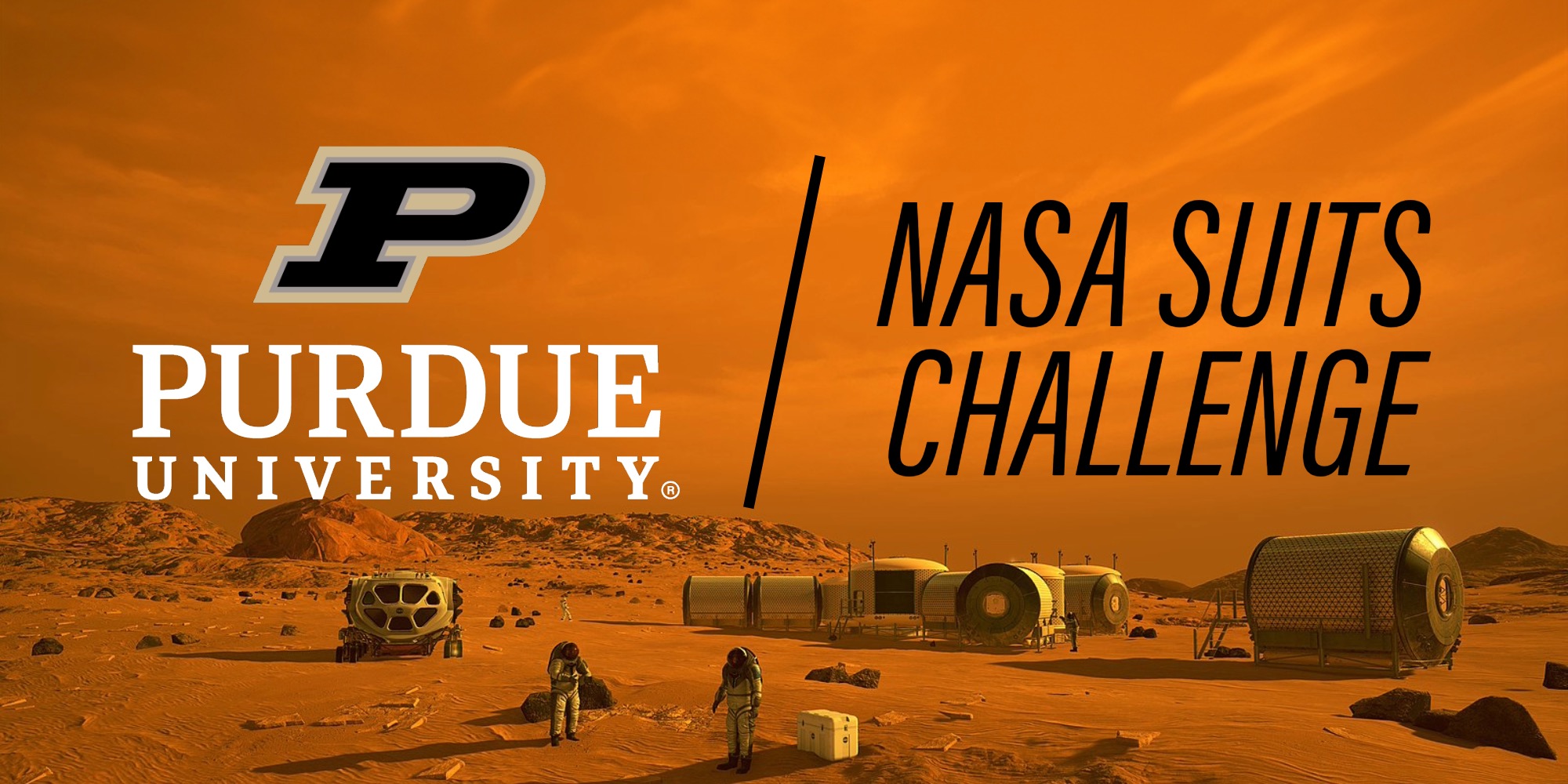From lunar dreams to Martian innovations: Purdue's JARVIS team inspires the next giant leap in spacesuit user interface
12-18-2023

Artist’s concept of astronauts and human habitats on Mars. (NASA image)
Purdue University's JARVIS team was recently named one of the 11 finalists in NASA's Spacesuit User Interface Technologies for Students (SUITS) challenge. Their mission: design user interfaces, software for spacesuits, and, a mission control console for use on the surface of Mars.
Growing up listening to stories of space missions to the Moon inspired Purdue undergraduate, Gurmehar Singh, to dream of humanity settling down somewhere beyond Earth.
NASA’s Artemis missions seek to land the first woman and next man on the Moon and establish a sustainable human presence on the Moon and ultimately, Mars. Students like Singh, a sophomore majoring in computer science and mathematics, can see where this dream fits into his next giant leap.

Singh is the team lead for JARVIS, a team from Purdue University, that has been recognized as one of the 11 finalists in NASA's SUITS challenge. Their objective is to create user interfaces, develop software for spacesuits, and design a mission control console specifically intended for deployment on the Martian surface.
"The ability to contribute to work related to the Artemis missions is a dream come true for me and anyone who imagined humans living elsewhere besides Earth,” said Singh. He added, “I have no doubt that every one of us in JARVIS will bring that passion into creating a truly remarkable piece of technology for the challenge.”
NASA SUITS is a design challenge in which college students nationwide help design user interface solutions for future spaceflight needs. NASA SUITS finalists will contribute AR design solutions to inspire future displays for crewmembers in later Artemis missions.
"The ability to contribute to work related to the Artemis missions is a dream come true for me and anyone who imagined humans living elsewhere besides Earth. I have no doubt that every one of us in JARVIS will bring that passion into creating a truly remarkable piece of technology for the challenge.”
Gurmehar Singh, undergraduate dual majoring in computer science and mathematics
Purdue’s JARVIS and the other 10 finalist teams designed graphic displays for a simulated mission using augmented reality. The software developed for the competition should allow crewmembers to accomplish complex tasks as well as navigate information and assistance. Teams also designed a localized mission control center, allowing full access to data as the EVA (extravehicular activity) and IVA (intravehicular activity) crewmembers work together.
Additionally, the finalists will use the mission control center to interface and control a rover. They will test their final designs in a Martian analog environment at NASA’s Johnson Space Center in Houston, TX.
With their innovative approach and dedication to advancing space exploration technology, the Purdue team stands poised to make a significant impact and actively shape the future of human spaceflight.
“We’ve gathered expertise from graduate and undergraduate students on campus, ranging not only from computer science, but also engineering, game development, computer information technology, marketing, physics, and mathematics. We are confident in our design and are looking forward to testing our work in an analog environment in Houston next summer.”

Associate Professor Aniket Bera is the faculty advisor for JARVIS and has witnessed the team’s dedication and passion in their work for the NASA SUITS Challenge.
“I am incredibly proud of our students for advancing to the finals in NASA SUITS. Their interdisciplinary collaboration draws student expertise from all over campus and this reflects the diversity needed to design solutions for future spaceflight needs.”
“The JARVIS team’s commitment to creating augmented reality technology for space exploration not only showcases their talents but also exemplifies the power of teamwork,” said Bera. He added, “I believe their work in the NASA SUITS challenge will play a part in developing new technology for the human spaceflight experience.”
The Purdue JARVIS team will fulfill outreach components of the challenge in the form of events around campus in the spring semester. JARVIS will move on to NASA’s Johnson Space Center in Houston, TX in May 2024 for the final event.
JARVIS Team Members
- Gurmehar Singh (Major: Computer Science & Mathematics) (Team Lead)
- Sharvari Deshpande (Major: First-year Engineering)
- Benjamin Emini (Major: Computer Science)
- Paul Greenberg (Major: Math & Physics)
- Michel Ladekan (Major: Aeronautical Engineering Technology)
- Michael Li (Major: Computer Science, Marketing with Data Analytics & General Management)
- Chawin Mingsuwan (Major: Game Development & Visual Effects)
- Swastik Patel (Major: Computer Information & Technology)
- Mihir Patil (Major: Computer Science)
- Rodrigo Schmitt (PhD Student, Aeronautics and Astronautics)
- Hrishikesh Viswanath (PhD Student, Computer Science)
- Madeline Willey (Major: Electrical and Computer Engineering)
- Peter Zakariya (Major: Computer Science & Data Science)
- Jason Alexander Fotso-Puepi (PhD Student, Computer Science)
- Dipam Patel (PhD Student, Computer Science)
- Vinitha Marupeddi (MS Student, Computer Science)
- Faculty Advisor: Aniket Bera, associate professor of computer science and director of the IDEAS Lab
About the Department of Computer Science at Purdue University
Founded in 1962, the Department of Computer Science was created to be an innovative base of knowledge in the emerging field of computing as the first degree-awarding program in the United States. The department continues to advance the computer science industry through research. US News & Reports ranks Purdue CS #20 and #18 overall in graduate and undergraduate programs respectively, 6th in cybersecurity, 8th in software engineering, 13th in programming languages and systems, 15th in data analytics, and 18th in theory. Graduates of the program are able to solve complex and challenging problems in many fields. Our consistent success in an ever-changing landscape is reflected in the record undergraduate enrollment, increased faculty hiring, innovative research projects, and the creation of new academic programs. The increasing centrality of computer science in academic disciplines and society, and new research activities - centered around data science, artificial intelligence, programming languages, theoretical computer science, machine learning, and cybersecurity - are the future focus of the department. cs.purdue.edu
Writer: Emily Kinsell, emily@purdue.edu
Sources: Gurmehar Singh, singh962@purdue.edu
Aniket Bera, aniketbera@purdue.edu